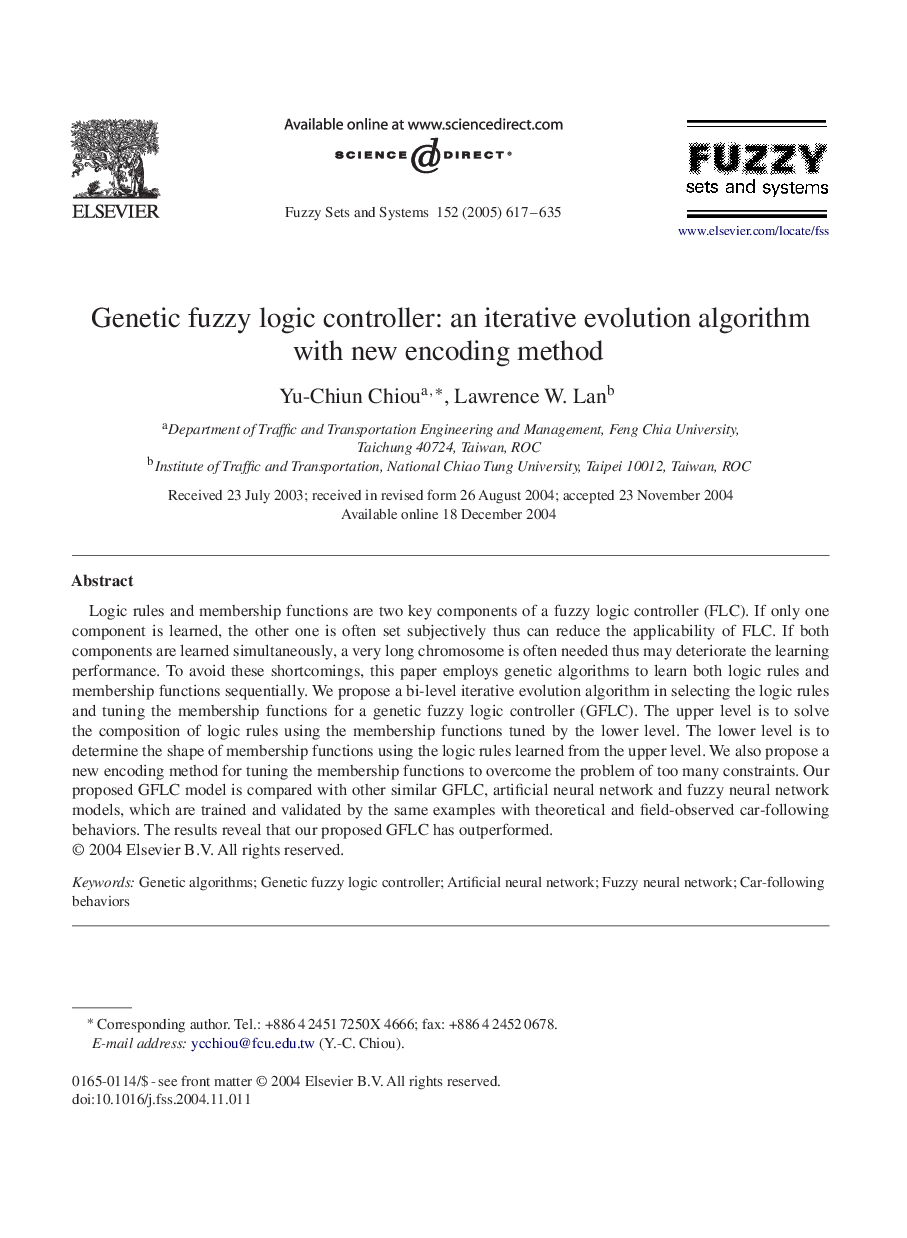| Article ID | Journal | Published Year | Pages | File Type |
|---|---|---|---|---|
| 10323726 | Fuzzy Sets and Systems | 2005 | 19 Pages |
Abstract
Logic rules and membership functions are two key components of a fuzzy logic controller (FLC). If only one component is learned, the other one is often set subjectively thus can reduce the applicability of FLC. If both components are learned simultaneously, a very long chromosome is often needed thus may deteriorate the learning performance. To avoid these shortcomings, this paper employs genetic algorithms to learn both logic rules and membership functions sequentially. We propose a bi-level iterative evolution algorithm in selecting the logic rules and tuning the membership functions for a genetic fuzzy logic controller (GFLC). The upper level is to solve the composition of logic rules using the membership functions tuned by the lower level. The lower level is to determine the shape of membership functions using the logic rules learned from the upper level. We also propose a new encoding method for tuning the membership functions to overcome the problem of too many constraints. Our proposed GFLC model is compared with other similar GFLC, artificial neural network and fuzzy neural network models, which are trained and validated by the same examples with theoretical and field-observed car-following behaviors. The results reveal that our proposed GFLC has outperformed.
Related Topics
Physical Sciences and Engineering
Computer Science
Artificial Intelligence
Authors
Yu-Chiun Chiou, Lawrence W. Lan,
